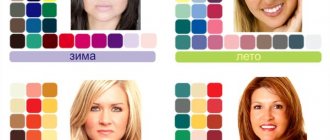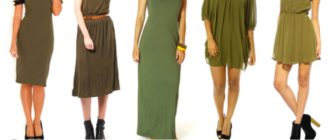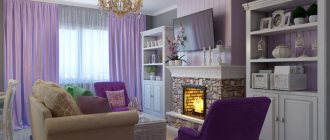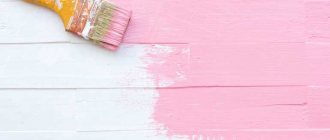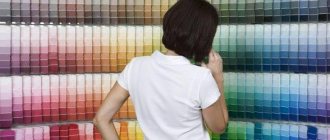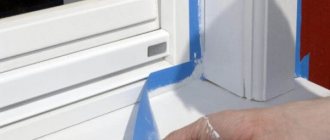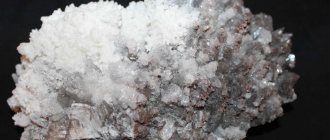Crimson and bright colors
Raspberry in combination with other colors behaves mainly in two different directions - bright and warm. Let's explain now.
Raspberry + blue
For example, raspberry and blue colors (both indigo and deep dark) together will look very bright and rich, such an image will be elegant and feminine.
It is suitable for business meetings, social events, and holidays.
Raspberry + brown
But crimson and brown colors in clothes will work in a completely different way, and the first thing that comes to mind is sweaters, jumpers, wool trousers, knitted dresses, jackets.
The difference in color development is hard to miss.
Raspberry + pink
You can also try raspberry color in collaboration with pink, but not pastel, so this combination should be diluted with someone else and more neutral.
In any case, it will be something quite bright that will require a minimum of accessories and intricate textures.
Raspberry + green
Raspberry combined with green in clothes, at first glance, sounds intimidating, but in fact it is a very harmonious tandem.
You can take it for an evening walk in the park (jeans, a green V-neck T-shirt and a raspberry long blazer), or on a more formal occasion (a raspberry tight-fitting plain dress and emerald accessories). This combination looks really very rich and noble.
Raspberry + yellow
Yellow, like lemon, will not always be a good company for raspberry. But it’s still worth a try, especially in spring or summer.
Choose clothes of simple styles from natural fabrics and play with these colors - it can turn out very fresh and juicy.
What shades of crimson exist?
Raspberry is generally considered feminine, and by and large it is.
It is mainly used by women (in interiors, clothing, cosmetics, accessories, etc.); among men this tone is practically not in demand.
This color is considered a symbol of love and passion. He attracts attention and even sometimes “makes a challenge.”
However, you should not overdo it with it, this will lead to rejection of the tone as such, and from an attractive shade it will turn into inappropriate absurdity.
What is an advantage and expands the scope of its use is that crimson is presented in a varied palette of tones (from bright and catchy, to pale and even dark).
You can also mix raspberry with others and get completely different shades with only a slight hint of “raspberry”.
The most sought-after and popular shades of crimson among consumers, designers and people of creative professions are:
- Geraldine.
- Indian red.
- Frez.
- Shades of coral.
- Dark pink.
- Cardinal.
- Carmine red.
- Alizarin.
Conversion
How to get brown color by mixing paints
Pigments from plants are used to dye fabric.
For painting, mixing of colors is also used to create a more accurate range.
What colors should you mix to make red? From the 3 basic ones - red, blue and yellow - all the rest are obtained.
In printing, they use a tone that is obtained by mixing two shades.
How to get red color when mixing paints:
- for printing it is made from two colors: magenta and yellow;
- to dye fabric or threads, you can mix pigments from the inflorescences of St. John's wort, safflower, northern bedstraw and madder roots;
- scarlet is obtained thanks to bedstraw flowers, for this you need to boil them for half an hour and add alum;
- To obtain a variety of shades, pigments are mixed: quinacridone violet, warm cadmium, burnt sienna or natural.
How to make red from pink? You need to mix pink with yellow, you get orange-red.
Methods for obtaining crimson color when mixing paints
Bright crimson color in the palette is located between red and pink.
It is calm and noble, which is why it is considered in demand and is actively used in interiors. Raspberry as accents is used in bedrooms and living rooms decorated in Empire, Renaissance, and Baroque styles. Beginning artists are often interested in how to get a crimson color; can this be done by mixing paints? It’s not difficult to create a shade with your own hands, you just need to know the tones suitable for combining.
Features of mixing artistic paints
How to get beige color when mixing paints
Different types of artistic paints produce unique effects when mixed. This depends on their chemical composition and the components necessary for diluting the pigments. Each material has its own subtleties and characteristics. This requires the painter to have a professional approach to work.
Watercolor paints
Watercolor paints are diluted with water. To obtain bright and rich shades in painting, it is necessary to take this nuance into account. Depending on the volume of water added, the watercolor paint will behave differently.
To obtain burgundy shades from watercolors, you can use the following names for shades of blue and red paint, depending on the manufacturer:
- Venetian red + ultramarine;
- cinnabar + indigo;
- cadmium red + Prussian blue;
- kraplak red + azure blue;
- scarlet + blue varnish.
Oil paints
Painting with oil paints requires a professional approach. This is a capricious material that requires special knowledge of different techniques and methods of mixing. With the help of oil paints, artists achieve a special volume and the necessary texture in their work.
In addition to the traditional mixing of colors on a palette, in oil painting, professionals often use illusionary mixing, which is created by applying paints of different colors close to each other. You can also use the method of multi-layer painting, when a tint layer with a translucent structure is applied on top of the main layer of paint.
You can learn more about the nuances and techniques of working with oil paints.
To obtain burgundy shades use:
- cadmium red + cobalt blue;
- iron oxide red + indigo;
- red kraplak + Prussian blue;
- scarlet + indanthrene blue;
- red quinacridone + ultramarine.
Acrylic paints
Acrylic is a universal paint that allows you to work on almost any surface. When dry, acrylic paint forms a smooth, glossy surface. The color obtained by mixing paints may differ after final drying. These subtleties must be taken into account when working with acrylic.
To obtain burgundy shades use:
- cinnabar + cobalt blue;
- carmine + indigo;
- Venetian red + ceruleum;
- cadmium red + turquoise;
- scarlet + ultramarine.
Tempera paints
Tempera paints have a dense, opaque and matte structure. When dry, tempera produces deep pastel colors, which, unlike acrylic, do not have a glossy sheen. Tempera works best on wooden surfaces, as it contains glue.
To obtain burgundy shades use:
- cadmium red + ceruleum;
- Venetian red + indigo;
- iron oxide red + turquoise;
- red kraplak + blue varnish;
- carmine + ultramarine.
Artistic gouache
Gouache, like watercolor, is diluted with water when mixed, but unlike watercolor paints, this material has a dense and opaque structure, reminiscent of tempera.
Unlike tempera, gouache does not have a strong adhesion to the surface, since it does not contain glue. Therefore, if you work with gouache without any water at all, when it dries it can crumble and crumble.
This material is perfect for children's creativity, as it is non-toxic, easy to use and can be easily washed off the skin with soap and water. To obtain burgundy shades, red and blue are traditionally used in a 4:1 ratio (with a predominance of red).
Getting purple
To obtain purple, at the initial stage you need to combine blue and red in equal proportions on the palette. The resulting color palette may not always match the desired tone, so it needs to be modified. This can be done using the following manipulations:
- To get a lighter purple paint, you can add a little white.
- When working with a mixture of lilac and white paints, you can get purple. The intensity is adjusted by the amount of white.
- A mixture of pink and blue colors will help create a soft lilac palette.
- If a muted tone is needed, black is mixed with cool red.
- When working with watercolors, saturation is regulated not with the help of white, but with the amount of water.
Additional option
Magenta is a primary color and cannot be created by mixing paints. It is mixed with available turquoise or bright blue. Any blue tone or cyan is suitable for this, without a greenish tint and not muted. With the gradual addition of colors, the color palette will acquire the desired shade.
In the video: how to get a bright purple hue.
Five ways
How to get red color when mixing paints
The most popular of them will be listed below.
Mixing paints
- The first way is to mix the orange and blue components with your own hands.
- The next method involves pairing red with green.
- The third option is to obtain brown from purple and yellow.
- Obtaining the desired color in an additional way.
- Mixing the main spectrum to obtain the desired shade.
Method No. 1
Orange + blue
- Let's see how to get a brown paint color and first we get an orange tone and for this the instructions are as follows: we will need red and yellow, where the first is given approximately 90%, and the second - 10% (you can vary a little, depending on the need, but you need a dark orange color). Try to ensure that the output solution is much closer to red than to yellow.
- Pour a little blue into the resulting mixture - its volume will be from 5% to 10% of the total composition, that is, for 90-95g of orange you need, respectively, 10-5g of blue composition. Increase the percentage until the mixture acquires a chocolate tone (if the solution is too light, add a little more blue).
- Please note that you will finally be able to figure out what the result will be only after the film has dried, but in any case, it will be much lighter than in the original state. Therefore, you can do a test on any surface, and then adjust the depth using blue or orange.
Method No. 2
Red + green
- Now let's see how to make brown from the paints shown in the top photo - red and green. If you don't have the last shade, you can make it by combining equal parts of blue and yellow paint. You will adjust the brightness by the amount of one or another paint, that is, make the ratio not fifty-fifty, but slightly changing the proportion of one or another component, depending on your need.
- After this, we begin to add the red component to the resulting solution until it darkens to the desired degree.
Method No. 3
Purple + yellow
- We continue to look at how to get brown from paints, and in this case we need to mix yellow and purple, but the first may not always be available, so you can make it yourself. To do this, we mix red and blue in equal parts and this way we get a dark, saturated solution of violet (do not forget that violet is located between blue and red in the color spectrum).
- Add yellowness little by little to the resulting mixture, just take your time so that you don’t end up with a too light solution - to do this you need to constantly stir the composition and this way you can control the proportions. For correction, you can slightly change the percentage, but it is best to do this after testing on any surface. The mixture can be used for both mineral surfaces and metal.
Method No. 4
Blue + yellow + red
- The fourth way to get brown paint is to spontaneously mix three primary colors, that is, first you pour two equal parts of two of them into one container, and then gradually add a third, getting the shade you need. In this case, the result will not be entirely predictable, since it will be difficult for you to adjust the proportions, but if you are making a solution that is enough for the entire painting area, then this is quite suitable for you.
- Also, to obtain a certain gray-brown or pure tone, you can mix previously obtained more or less dark mixtures, gradually reaching the parameters you need. In such cases, you can still fix what color you get by merging different proportions, but this path is more experimental than practical.
Method No. 5
You can mix all colors
- And now we will learn how to make brown paint from all the primary colors available, gradually adding one after another until the consistency required in this case. To begin with, we take two dark shades of blue and green paints, mixing them in equal proportions, and after that we add exactly the same proportion of black. Now, we add the same percentage of red to the resulting solution, and bring this entire composition to a single color - if you do this in large quantities, then the most acceptable result can be achieved when working with a mixer clamped into an electric drill.
- Now all that remains is to find the desired shade, for which we use the yellow component. There is no longer any clear indication of its quantity; simply, the more there is, the lighter the composition will be.
How to get crimson color
Raspberry is usually called a color between red and pink. This peaceful, orderly color is associated with such lush historical genres as Baroque, Empire and Renaissance.
You will need
- – palette for mixing paints;
- – paints;
- - paper;
- – tassels.
Instructions
1. Don't forget, there are three primary colors that are impossible to obtain. These are blue, scarlet and yellow. Accordingly, making the paint color red is absolutely acceptable. 2. Squeeze a little red and a drop of blue onto the paint mixing palette. Mix them thoroughly until they acquire a raspberry color of a uniform consistency. By changing the number of blue paints, you can get the crimson color of the intensity and brightness you need. 3. If you need to get a red pastel color, mix red paint with a small amount of white on the palette. And after that, add blue little by little. 4. If you want a muted and slightly darkened red, add a drop of black to the red and blue paint. Be careful not to use too much black; on the contrary, you risk turning all the paint on the palette black. 5. Please note that the gouache becomes lighter as it dries. Therefore, by diluting this paint to a crimson color, make the shade a little brighter than desired. 6. Add a drop of purple to the red paint and you will get a clear, intense red color. 7. Use only clean brushes to pick up paint of different colors.
Painting knows a lot of methods for acquiring the desired color . One or another paint can be applied in its pure form, without resorting to mixing. The required color can also be obtained by mixing 2 or more colors.
Instructions
1. When mechanically mixing paints, a palette is traditionally used, after which the result is transferred to the canvas. Occasionally, mixing paints to obtain the desired color is done directly on a sheet of paper. 2. Paints that have been mixed may change shade and concentration. Burgundy color, for example, can be obtained by mixing black paint and cinnabar. Chemical interactions when mixing paints, however, can change the color scheme, causing it to fade. 3. You need to know that blue paint, as well as yellow and red, cannot be obtained by mixing other colors. The fact is that blue color belongs to the so-called primary colors , from which, if desired, you can get millions of other shades. But, we repeat, it is unrealistic to get blue from paints of other colors. 4. But shades in every limitless variety can be obtained by mixing any two colors. In this case, the relative ratio of the number of all the paints used during mixing will be important. Thus, equal numbers of blue and yellow artistic colors will result in green. 5. If you now mix a certain amount of yellow paint into the unnaturally obtained green color, you will see green shades gradually turning into yellow. You can return to the original blue color by gradually adding blue paint to the green paint . 6. Remember that the closer the colors are to complementary ones, the less intense the color will be produced by mixing them. In other words, the colors will become close to gray. 7. To create brilliant and memorable images, the artist must strive to use the smallest number of colors while maintaining a sense of completeness of the color scheme. Artistic knowledge and skills improve as the skill of handling paints accumulates.
The theory, described by Leonard da Vinci, states that by mixing three basic colors ( red , blue and yellow), you can get all other colors . However, according to this result, the primary colors cannot be obtained by mixing other colors. But if you approach this issue from a utilitarian point of view, it turns out that ready-made paint is not invariably used to give a red color. In typographic printing, red color is obtained by mixing 2 components. Pigments extracted from plants are used to dye textiles. And even artists choose to mix several colors to achieve a more precise shade of red .
Instructions
1. Typographic printing is based on subtractive color (or the CMYK color model). All the variety of colors in this color model is obtained by combining four primary colors: cyan, yellow, purple and black. The scarlet color on a printing press print is obtained by applying two main process inks - magenta (magenta) and yellow. This method can be used, say, when creating color engravings. Having these two printing inks available, you can get red and even some of its shades on paper. In places where two colors overlap (when printing from different printing plates), the drawing is painted red . 2. By adjusting the ratio of colors in the direction of increasing the number of one of them, it is possible to obtain shades of red from cold purple to warm orange-red. The CMYK system is also the basis for the operation of color printers. This color model is also used in professional selection colors based on special pigments (for painting cars, finishing facades and interiors of buildings, in the textile industry). 3. In order to get a red color on fabric or yarn, they can be dyed using natural red pigment obtained from the flowers of St. John's wort, safflower, madder roots and northern bedstraw (or natural). Boil the crushed parts of plants in water and boil the fabric or yarn in the resulting decoction for an hour. Pickle the wool in advance in a solution of potassium alum. 4. From bedstraw flowers you can get a paint that colors various materials in a clear red color. To do this, boil the dried, powdered flowers for 30 minutes with the addition of alum. Vegetable red dye can also be obtained by evaporating decoctions of St. John's wort and safflower flowers to a thick residue. Orange lichen (wall goldfly) produces cherry paint. To do this, grind the lichen and fill it with a solution of strong potassium or baking soda. After three minutes the paint is ready. 5. Scarlet color is quite common in nature. Consequently, different shades of red are often named after their natural owners: berries, fruits, minerals and flowers. Red, cherry, garnet, ruby, terracotta, pink, coral, crimson red, red , wine, burgundy, burgundy - all these colors make up the red range. To obtain a variety of red shades in painting, paints based on various red pigments are used, giving either warm or cold shades. Cold quinacridone violet or red (ruby red ), warm cadmium clear red , orange-red burnt sienna and natural sienna - the listed paints in different combinations are best used to acquire many shades of red . Helpful Hint When adding achromatic colors (white, gray and black) to scarlet (warm or cool tones), you can get a wide range of shades that vary in lightness, saturation, and brightness. Gray color conceals the concentration of red, black makes the color darker, and with the support of white, pastel shades are obtained.
When you create your next masterpiece with brushes and paints, you probably want it to be shiny and intense. Painting has about 20 brilliant shades, which you can create yourself. Before you start painting, try to get a brilliant color by mixing the paints as needed.
You will need
- – paints;
- – brushes;
- - palette.
Instructions
1. Prepare a huge, comfortable palette on which you can mix several options at once. To do this, take a clean white cloth, a plastic tray, a varnished board or paper. Prepare several brushes and a jar of water. Of course, in order to get brilliant colors, you cannot do without excellent professional paints, but you can use ordinary gouache or watercolor. 2. Mix the main shades in turn and get brilliant intermediate colors: when mixing red and yellow you get orange, and when you combine blue and red you can see a rich purple color. Compare all the colors that are obtained on a working paper canvas. 3. Mix similar colors, say, green and yellow, scarlet and orange, blue and purple. By adding a tint, the color will become more intense and striking. 4. Some colors can be made brighter with the help of warm shades; to do this, add orange or yellow paint to the colors on the palette. For example, the pink color will become much richer and more exciting if you add a little orange paint to it. 5. In order to highlight the resulting color and draw attention to it, surround it with lines and details of muted contrasting tones, for example, a red flower will look much prettier among green grass than against chestnut wallpaper. 6. To make an icy color more sparkly, surround it with muted warm tones. For example, in order to highlight a pure blue color, add orange colors next to it. Adjust the amount of blue and orange to achieve maximum contrast and brightness. 7. Emphasize the concentration of colors with black details; black color gives the drawing depth and complexity. Use black color very carefully. If a chestnut or blue tint is visible in it, use this paint very carefully. To add a darker hue to the color, add black to the palette with the very tip of a thin brush. 8. In painting, to achieve our goal, white color is also widely used; apply it as a primer under the drawing, thus making the basis for rich and intense shades. Add white to other colors if you need pastel colors (pale pink, clear green, soft blue). Video on the topic Useful advice Every person has his own psychological perception and color sense, therefore, take into account all the nuances of the power of colors on a person and their mutual combination. Note! According to the meaning of color in psychology, the red color, due to the presence of blue in it, does not fight life, but loves it very much. People who choose this color over every other strongly believe in the power of words and strive to achieve what they want, despite obstacles. At the same time, they are extremely impulsive and unpredictable. Helpful advice : To paint wood red, prepare paint from cherry bark. To do this, grind 15 g of bark and add 50 cubic cm of water. Insist for a day. Boil and strain. Leave a cut of any plant in the resulting paint for 5 minutes, transfer it to hydrochloric acid, and it will turn red.
Crimson and achromatic colors
Raspberry + black
Raspberry and black in clothes will be another alternative to red. The combination is almost as classic, but with a touch of novelty and freshness.
If the dress code is not strict, you can play it up in completely different ways in the office - replace a white shirt with a crimson one or decorate a white one with a crimson pendant, replace a black jacket with a crimson one or choose a black one with crimson elements in the design, and finally replace a black trouser suit with a dark one -raspberry or buy a leather pencil skirt in a dark crimson shade.
In addition, this tandem can be endowed with sexuality and extravagance, you just need to choose the right dress with a seductive silhouette.
Raspberry + gray
Raspberry also goes well with gray, highlighting its neutrality and giving the image a zest. For more informal occasions, this color scheme can be diluted with silver, which is always an excellent companion to simply gray.
The crimson color has a lot of shades and is very unusual in nature. This gives you the opportunity to experiment with it in different directions and achieve stunning results in color combinations!
_
Natural red
In addition to artificially obtaining color, it can easily be made from natural materials. This is how bedstraw flowers allow you to paint objects bright red. To prepare this paint, flowers are dried and boiled with alum for half an hour. Safflower and St. John's wort flowers are also suitable for making red paint by boiling water until thick. Cherry paint, similar in color, is made from orange lichen. You need to finely chop the lichen and mix it with baking soda (it is better to use a solution), wait 3-4 minutes and you can use it.
In nature, red color can be found quite often. Therefore, its different shades are sometimes named based on their natural hosts: fruits, minerals and berries. Among them you can find such names as: raspberry, pomegranate, cherry, coral, blue, wine, burgundy. All similar colors form the red spectrum.
Red shades in painting are made based on pigments of warm and cold shades. Quinacridone ruby or violet should be considered cold, and light cadmium, orange sienna (natural and burnt) should be considered warm.
RGB and CMYK color models
What is red made of?
Red color in printing is made by mixing other basic colors. The CMYK color model is used here. All differences in the colors of the model used are made by mixing the desired base colors:
- Blue – cyan
- Magenta (violet) – magenta
- Yellow – yellow
- Black – black
As in other color models, you need to take at least 2 colors, and in our case, red on printed products is made by combining 2 process colors: violet (magenta) and yellow. This method is also used to make color engravings. If you acquire these paints, you can make not only red, but also achieve shades of it by adjusting the ratio of yellow and magenta (violet). The range of red colors will be from pale purple to rich orange-red.
Mix yellow and magenta to get red
Information: In addition to printing, the CMYK model underlies the operation of most printers. It is also used for professional painting of cars, decoration of interiors and facades of buildings, and in fabric production.
Shades of crimson
For most people, there are only “lighter” and “darker” colors, but experts distinguish several types of crimson.
The following shades are available:
- light dark blue;
- crimson;
- bright raspberry;
- ruby-raspberry
- red-raspberry
- dark crimson
There are other names such as: alizarin crimson, crimson blush, electric crimson..
The colors at the top of the list are romantic and muted, followed by deep, serious tones.
To obtain pastel shades, you must first add white to red, bring it to the desired saturation, and only then “deepen” the color with blue. A little yellow is also good for softening.
To achieve flashy raspberry shades, when mixing, instead of blue paint, add a drop of purple.
Note. This way you will get a very bright color. In the interior it can only be used for the smallest details, otherwise it will become depressing. If you are going to cover large spaces, soften the shade with a white color.
By varying the selected shades of blue, you can also get different results. If you take a deeper color, such as sapphire, the crimson will become richer and darker.
Adding black will help create a muted tone. You need to be especially careful with this paint, mixing it in slowly drop by drop. It is enough to overdo it a little, and instead of an aristocratic cardinal you will get dirty brown.
Precise instructions are unlikely to help here. In the process, you yourself will understand which colors to mix and in what proportions to get the desired tone.
Steps
Method 1 of 3:
Making purple from magenta, blue or cyan
- 1
Buy magenta.
The reason why mixing red and blue paints does not produce the vibrant purple color you want is because red paint absorbs green and blue light, while blue paint absorbs red and green light. The eyes only see color as a combination of red, green, and blue (the reason there are three primary colors in the first place), but there is very little red and blue light left for them to perceive—and the brain, which interprets the combinations of colors that the eyes see, considers this so-called purple almost black. On the other hand, magenta, which only absorbs green light, allows our vision to see more blue and red light. Mix it with a small amount of blue (which absorbs green and red light) or cyan (which absorbs only red light), and your brain will receive a strong signal from blue-sensitive nerve endings and a weaker signal from red-sensitive nerve endings. and you will see... a bright purple color!
- Magenta is one of the main "subtractive" colors used in graphic design and printers, along with yellow and cyan. Look for paint that contains PR122 or PV19 pigment, but not PB (blue) or PW (white).
When buying artist paint, you can compare its color to the magenta of printer ink. Just print out the sample and take it with you to the store.
- Since magenta is a primary color, it cannot be created by mixing other colors. Mixing magenta with yellow in varying proportions produces a range of reds and oranges. Mixing magenta with cyan in varying proportions produces a range of blue and violet shades.
- 2
Mix magenta with any bright blue or turquoise color you have.
Any cyan or blue should do, just not muted or greenish. To start, add just a little blue, then add more and more until you get the desired shade.
Method 2 of 3:
Making purple from pure red and blue
- 1
Determine if the red and blue you have are “pure”.
The reason why mixing red and blue does not always produce the desired purple hue is that any paint is made up of many different colors rather than one X Source of information
. A tube of red paint may also contain orange and yellow pigments, while a tube of blue paint may also contain red and yellow pigments. When you mix red and blue paints that are not “pure”, you get a brownish, dirty purple color.
- Find a red paint without yellow or orange undertones, as mixing these colors with blue produces a brown color.
Find blue paint without yellow or green undertones.
- If you're not sure if your paint is clean, check this. Pour some onto the palette and add white. What shades do you see? Whitewash helps reveal the true composition of paint pigments. Red should turn to pink, not peach, blue - to blue, not sea green.
- 2
Mix pure blue and red.
Pour equal amounts of red and blue paint onto your palette and use a brush to mix them together to create a rich purple hue.
- To get a purple color close to lilac, add a little extra blue paint.
Add more red paint if you want a purple color with a warm pinkish tint.
Method 3 of 3:
Adjust the resulting purple color
- 1
Add white paint.
Whether you get your purple from red and blue or from magenta and cyan, it can be lightened and brightened by adding white. To start, add just a little paint, then gradually add more and more to achieve the desired shade. By adding the same amount of white to purple, you can get a pastel color.
- 2
Add black paint.
By adding black to purple, you can make the color a deeper, richer dark purple. Mix a little at a time to avoid accidentally darkening it too much - it will be difficult to return to the original shade after adding black.
- 3
Mix black and white.
They will produce a grayish lavender color that can be as dark or light as you want. Lavender can be given a pinkish tint by adding more magenta or red, or lilac by adding blue or cyan.
- 4
Add more magenta to create a pinkish-purple color.
Add more cyan or cyan to create a purple-violet color.
Primary and secondary colors
As you know, there are three primary colors (red, blue, yellow) and three additional colors (purple, orange, green). These are the basic colors. By combining them, you can get all the other colors and their shades (in theory, yes, in practice the situation is a little different). In the figure, the primary colors are represented by circles, and additional colors are formed at the intersection of the pairs. These pairs show how mixing the colors of the main row produces additional ones.
Primary and secondary colors of the palette
In practice, mixing colors is an interesting process, but often the result is difficult to predict. We work with paints, and they are a mixture of a coloring pigment and a binder base. That is, they have their own properties due to the presence of that very base. After all, paints come in different types - oil, acrylic, aniline, etc. Accordingly, the result will be slightly different. When you work with paints from the same company for a long time, you can almost accurately predict what will happen if you add this or that component.
It is also worth remembering that if you mix light rather than paint, the result will be different. Paints are only a reflection of light and not all laws work with them in the same way.
Obtaining additional colors: orange, purple, green, their shades and brown
Pairwise combination of primary colors gives us additional shades:
- Orange is obtained by mixing red and yellow.
- You get purple if you add blue to red.
- Green can be obtained by mixing yellow and blue.
Mixing colors should be in equal proportions. In this case, we get a “neutral” tone. If you are not satisfied with the result obtained, you can add one of the components, “shifting” the shade in one direction or another.
Additional colors and their shades
Please note that red and blue do not always produce purple. Often this mixing of colors produces a “mud color.” This is because your red contains yellow, that is, it is not the main one, but only one of the shades. To get purple, there must be pink or purple instead of red. On the other hand, mixing pink and yellow will not produce blue. So to get a specific color, first experiment with a small amount of paints. Once you are sure of the result, you can repeat it as needed.
If we add to the resulting additional colors the primary ones that are already present in them, we get the same color, but of a different shade. We didn't introduce any new colors, we just changed the concentration of one of the existing ones. This is how we get mixed colors: yellow-orange, red-orange, red-violet, blue-violet, blue-green and light green.
How to get brown color when mixing colors of an additional row
What happens if you add one that is not in it to the additional colors? The result will be a mixture of all available primary colors, and it will give us a brown color (when working with light it will be gray, but with paints it will be either brown or very close to it). So, to get brown, you need to mix all the primary colors: yellow + red + blue. Or add “missing” to one of the additional ones:
- add yellow to purple;
- to green - red;
- add orange to blue.
That is, to get a brown color, you can mix three primary colors or add the missing primary color to the additional ones. Interestingly, if you mix the same light waves, you get gray light. But paints are only a reflection of light, so there are certain differences.
Color wheel - how to make it
If the colors - primary and secondary - are placed in a circle, according to how they turned out, we get a traditional color wheel. We divide the circle into 12 parts. At the vertices of the triangle, fill the sectors with primary colors.
Drawing up a color wheel
Their derivatives, obtained from equal shares of neighboring colors, are in the center of the sector. These are called “first-level complementary colors.” To the right and left of them we place the shades that were obtained by adding another part of the corresponding component. This is how we get our own color wheel.
Mixing colors creates a color wheel
Please note: mixing paints from different companies gives different shades. Therefore, creating a color wheel is useful if you are going to be working with certain paints for a while. Looking at the result and knowing how you got it, you can understand what you can add to get the desired shade.
Getting shades
All colors that exist in nature are called chromatic. This is all the variety of colors and their shades. In nature, three colors are not found in their pure form - white, black and gray. They are called achromatic. By adding achromatic colors to others we get different shades.
Each color can be darker or lighter
For example, we get pink by adding white paint to red. For blue - add the same white to blue. And so with all the colors that are present in the color wheel. The lighter the shade we want, the more white paint. Sometimes - for very light shades - it is easier to achieve it by adding the desired dye to the white paint. These light shades are called pastels.
To obtain pastel shades with a “dusty” effect, gray is added to the primary colors. Please note that multiple achromatic colors can be added. For example, we got the desired “degree” of pale purple, then added a certain amount of gray to it. The tone was a little more subdued.
How to get shades of colors: mix paint with white, gray or black
If you need to turn a saturated color into a dark one, add black to the base color. This is where you have to be very careful, add a little at a time, stirring thoroughly.
We recommend: 6 tips on how to hide a gas pipe in the kitchen + photos
Magenta color in clothes
In fact, magenta is a whole group of colors that are obtained by mixing red and blue colors in certain proportions. Due to the fact that magenta color consists of two waves of different lengths, magenta cannot be called either a cool or warm color. As a result, magenta suits almost all girls and women, plump and thin, blondes and brunettes, young and not so young.
The dye used as a color standard is magenta, which was first obtained in 1859 in Italy shortly after the battle near the Italian town of Magenta. Initially, the Italians called this color magenta, but a year later, in 1860, they renamed it mangenta in order to perpetuate the memory of the soldiers who fought for Magenta.
The magenta color group includes 3 colors:
This is the color of 1860 (also called deep magenta), see swatch:
Magenta
This color appeared in 1980 and was widely used in printing and looked like this:
Typographic magenta
Electronic magenta (fuchsia)
Electronic magenta is the popular fuchsia color that almost never leaves the catwalks. This color has a characteristic red tint, making fuchsia in clothes look more noble, elegant and sophisticated compared to pink.
Fuchsia color
One of the shades of fuchsia - ultra pink or shocking pink - first appeared on the catwalks with the light hand of the designer and one of the main fashion reformers Elsa Schiaparelli in 1936.
The color fuchsia (or electronic magenta) has many shades: this is pale magenta, or light pink fuchsia:
Pale magenta or pink fuchsia:
Pale magenta
Ultra pink:
Ultra pink
And finally, the shocking pink color in clothes or, as it is sometimes called, neon pink, the appearance of which we owe to the Italian Schiaparelli:
Shocking pink – fuchsia color
In the photo - Miranda Kerr in a fuchsia or shocking pink dress:
Miranda Kerr in a fuchsia dress
Pros and cons of mixing it yourself
It is recommended to buy ready-made brown paint if you are not confident in the quality of mixing it yourself. When using acrylic paints in particular, there may be problems with application to clothing or canvas - they will look different there. This is influenced by some components and features of raw materials from a particular manufacturer. If you need to paint a lot of walls, there are two options - buying ready-made paint or making it to order. It is not possible to make two mixtures of absolutely identical shades on your own - you need special equipment. In a simpler situation, experimentation should not be avoided. You can fully realize your ideas about shades. There will be some negative aspects in this process. Since the entire volume of paint is calculated initially, “misses” are possible. In addition, tinting takes a lot of effort. The problem will also be the synthesis of rich tones. Well, the main disadvantage can be considered the high tendency to fade, characteristic of such solutions.
However, there are many advantages:
- saving;
- wide selection of paints for cooking;
- creating unique shades and adjusting them;
- mixing near the work site.
Rules for getting green
Colorists distinguish between several types of color palettes. The most common is RGB (Red, Green, Blue). In this spectrum, the main shades are considered to be: red, blue and green. There is also a CMYK palette (Cyan, Magenta, Yellow, Key) which consists of the colors: magenta, cyan, yellow and black. These patterns determine the order in which paints are mixed to create the desired color. However, they are used primarily in computer graphics.
In painting, the main tones are: red, yellow and blue. The shades were not chosen by chance: they appear when light is refracted. Green is not included in this list, because... in nature it becomes visible only when yellow and blue waves are mixed.
Shades from yellow-green to blue-green depending on the proportion of colors
The white tone highlights the greens. Additional colors such as black, brown, red, purple, orange, etc. allow you to obtain complex shades of green, such as marsh, olive, khaki, turquoise, etc. We will look in more detail at how to obtain specific shades of green below.
Other combination options
There are many other techniques to create the desired effect by adding some kind of dye to the base color. The answer to the question of how to get ivory color is multifaceted and depends on the surface where you plan to apply the paint. The simplest option is to mix a snow-white base with a yellowish one. For example, yellowish ocher or a minimal amount of strontium is added to white. To tint paper, a small amount of potassium permanganate is diluted in water. A light pink tint indicates a correctly diluted solution. A cotton swab, brush or sponge is moistened with the resulting composition, after which the surface of the paper is treated.
Advice! For double-sided tinting, the sheet can be dipped in a container with a solution of potassium permanganate for a couple of minutes. After drying, it will acquire the desired ivory effect.
There are also several ways to get black:
- by mixing the three basic colors of red, blue and yellow;
- when combining cyan, magenta and yellow;
- a combination of green and red, but the result will not be 100% clear, but only close to the desired effect.
We will try to answer the most popular questions about mixing options:
- How to get raspberry color: the base is blue with the addition of red, white and brown tones.
- You can get turquoise color, whose second name is aquamarine, by mixing blue and green. Depending on the proportions, the tones of the new shade range from soft pastels to intense and bright ones.
- How to get yellow? It is a basic color and cannot be obtained by combining other colors. Something similar to yellow can be created with watercolors by combining green and orange or red. But it is impossible to achieve purity of tone in this way.
- How to get a brown tint? To do this you will need basic paints: red, yellow and blue. First, a small amount of yellow is added to the red (in an approximate ratio of 10:1), then the volume is gradually increased until an orange tone is obtained. After which they proceed to the introduction of the blue element, 5-10% of the total volume will be enough. Minor adjustments to proportions will produce a wide variety of brown effects.
- Combining black and white elements in different proportions gives a diverse range of gray tones.
As you can see, there are countless options to achieve the desired effect in the creative design process. The information presented will be supplemented by a table with options for mixing colors and video:
